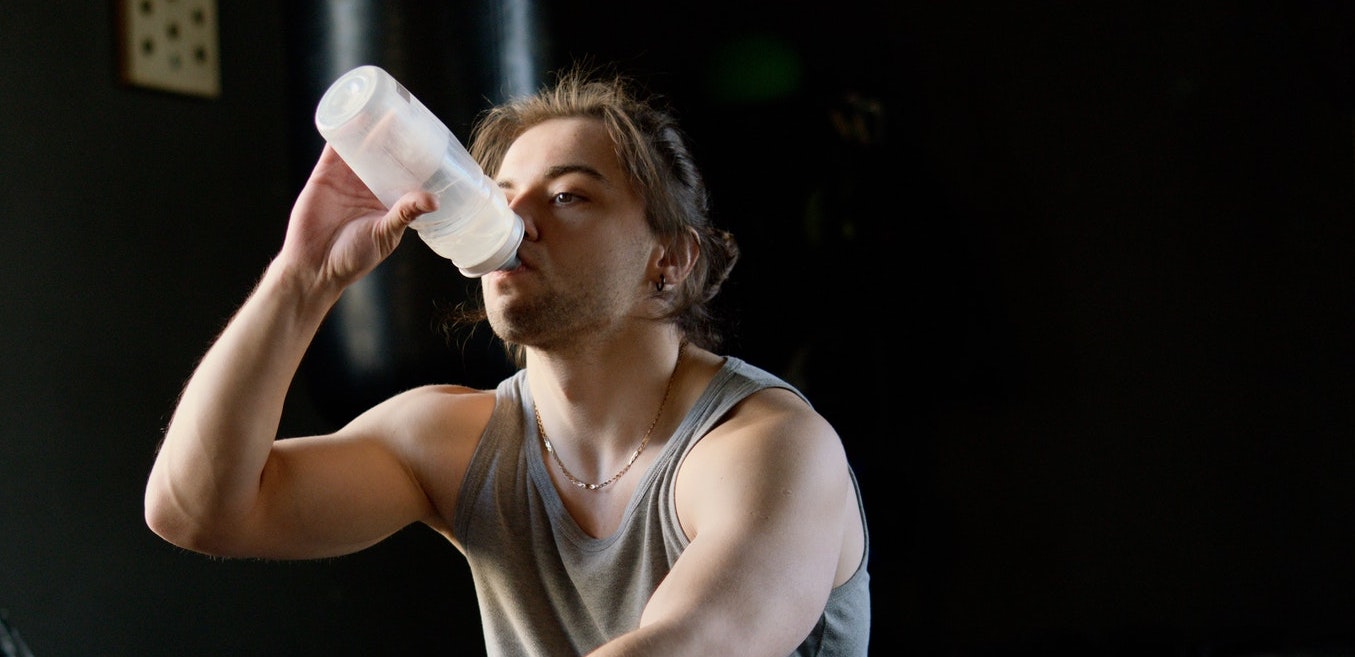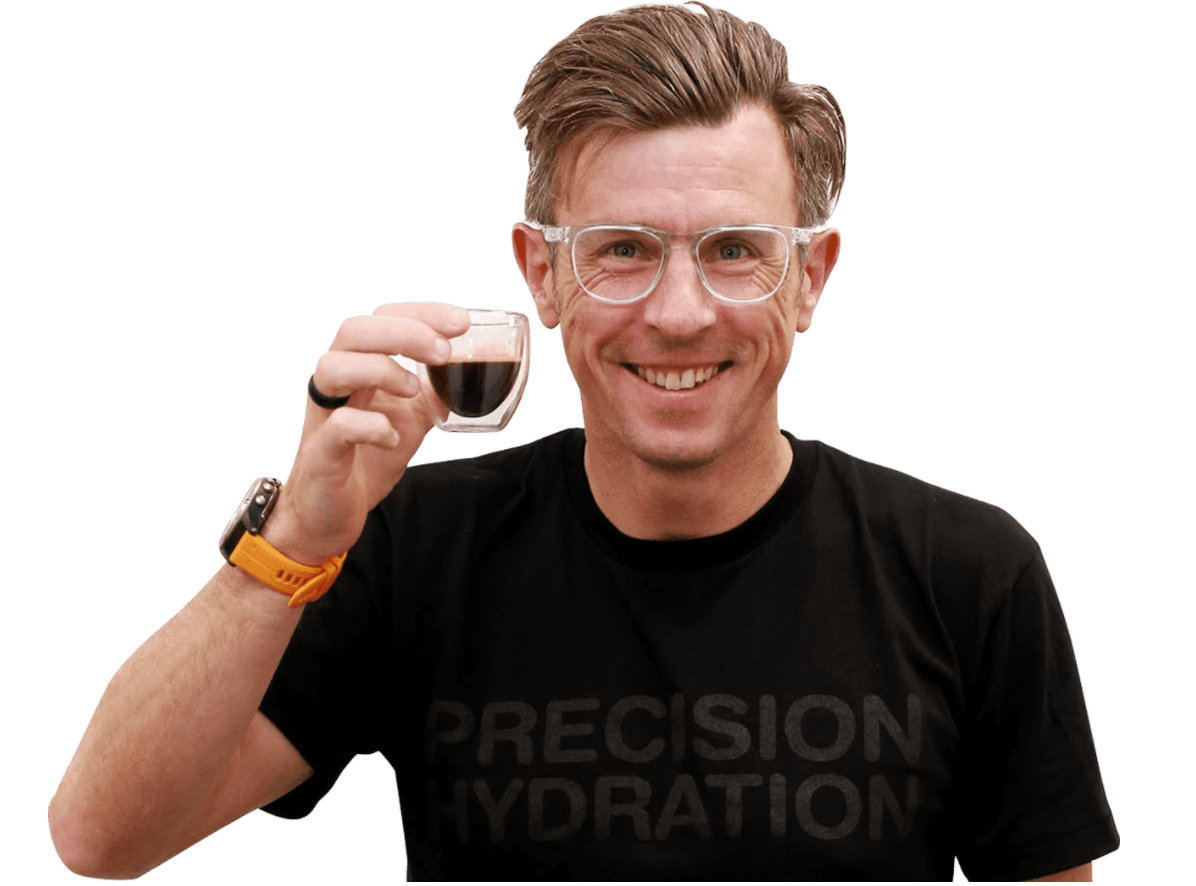Your average indoor session is probably more intense than an outdoor ride because we generally go for ‘quality’ over ‘quantity’ when indoor training (unless you’re riding Hadrian’s Wall because, well, you just really enjoy being in your ‘pain cave’ for hours and hours on end).
This results in a higher sweat loss per unit of time and so it’s important to think about how you’ll stay hydrated on the trainer if you want to perform at your best and get the most out of your time.
So we’ve asked Sports Scientist Andy Blow, Founder of Precision Hydration, to share his thoughts on how you can nail your hydration when you’re training indoors…
Why is indoor training so sweaty?
A couple of key things impact how sweaty you get on the turbo trainer; airflow and temperature…
Air Flow
When outdoors, you’re moving through air so you get some airflow past the skin. Air movement causes heat to be drawn away from the body’s surface more effectively (via convection and sweat evaporation) and this cools you.
On a static bike (or treadmill), you lose this airflow and the sweat tends to drip off you, making you more aware of it. And, as there’s no natural cooling effect, you probably actually do sweat a little more to compensate too (unless you attempt to mitigate the lack of airflow by adding a fan…).
Temperature
Your body tries to offload heat to the environment when you’re riding. The bigger the gradient between the air temperature, and the lower the humidity, the easier it is for heat to be evaporated away. As many places we train indoors are already quite warm and humid, the gradients for heat loss and evaporation are less pronounced than outside, and this further hinders thermoregulation and drives your sweat rate up.
So, whilst you don’t necessarily sweat significantly more indoors than outdoors, there are reasons why total sweat loss might be higher some of the time.
Tips for staying hydrated
There are some simple steps you can take to ensure that you’re well-hydrated for your Fulgaz sessions…
Before: Arrive well hydrated
As I mentioned earlier, most indoor rides are shorter but more intense (‘quality over quantity’). So, it’s important to make sure you start longer/tougher rides well hydrated.
There’s no need to go overboard on fluid intake in the immediate build-up to your session. Just try to stick to good hydration practices on a day-to-day basis. But, if you do find yourself feeling a bit dehydrated leading up to a key session, it’s a good idea to add some sodium to your drinks in the hours before you start, as this maximises absorption of the fluids you’re consuming and will increase your ability to thermoregulate by sweating.
Drinking a strong electrolyte drink before a ride (aka ‘preloading’) can significantly improve your performance. Starting sweatier rides well hydrated reduces the amount you’ll need to drink ‘on the move’, when you’re focusing on pushing hard.
Preloading with a strong electrolyte drink may also help you avoid cramp, which can be triggered by sodium depletion.
What to do
- Drink around 500ml (16oz) of a stronger electrolyte drink (like PH 1500) about ~90 mins before you start your ride
- Try to finish it around 45 mins before you start to allow your body time to absorb it
- DON’T just drink lots of water before a ride! You can end up diluting your blood sodium levels, increasing the risk of a ride-ruining condition called hyponatremia (low blood sodium levels)
- Preloading isn’t necessary every Fulgaz ride, but it can be very useful before more intense, sweaty rides where you tend to struggle
During: Drink to thirst during the session
This comes back to the ‘don’t overdo it’ point. Ultimately, don’t interfere with what you’re actually there to do (i.e. get sweaty on the turbo trainer) by trying to taking on unnecessary amounts of fluid.
If you’re riding for a while, or you’re a heavy/salty sweater (look out for these common ‘symptoms’), it’s likely you’d benefit from adding some electrolytes to at least some of your drinks. Take this free online ‘Sweat Test’ to get some personalised advice on what to drink during your rides.
In terms of volume, very few cyclists can drink much more than 1L (32oz) an hour so, unless experience tells you otherwise, it’s unlikely you’ll need to drink more than that, especially if you started well hydrated.
Experimenting within these guidelines, whilst learning to listen to your body, is the best way to work out how much you need to drink during a ride
Thirsty? Dry mouth? You may not be drinking enough. Try to respond to the early signs of thirst and not leave it too late.
Bloated? Fluid sloshing around in your stomach? Need to pee often during the ride? You might be drinking too much. Don’t force fluids down if you don’t feel you need them.
Recovery: Continue to drink to thirst and maybe add sodium to your food and drinks
Most of the time, just drinking water and eating as normal after the ride is enough, but if you’re suffering with cramp, feel especially fatigued or you plan to train/ride the next day, then a more proactive approach to hydration would be advisable…
What to do
- Sip on a 500ml (16oz) bottle of a stronger electrolyte drink in the hours after you finish
- As with preloading, aim for drinks containing more than 1,000mg of sodium per litre, such as PH 1500
- Just drink as much as you feel you need to
Following these simple steps should help keep you hydrated during your FulGaz sessions (and beyond) and able to perform at your best. If you’d like to discuss your hydration strategy with one of Precision Hydration’s experts, you can book a free video consultation.
And, if you’d like to give electrolytes that match how you sweat a try, just use the code FULGAZ15 at precisionhydration.com.

